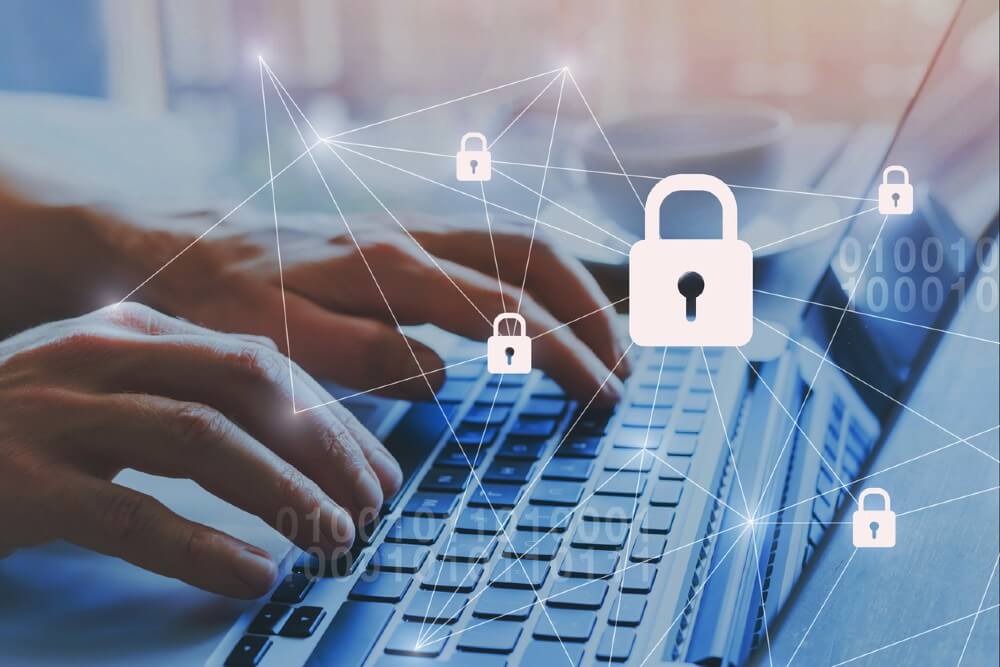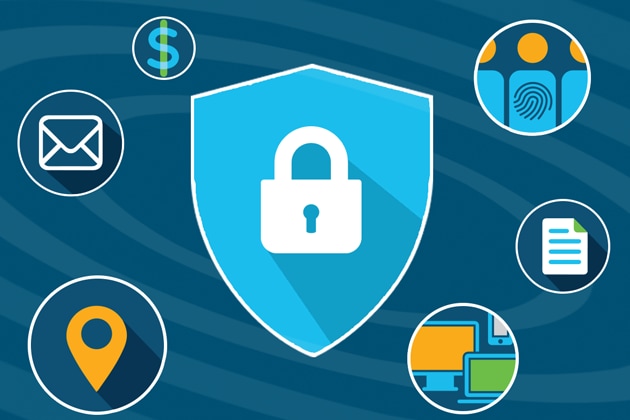Information Security protects data from unauthorized access, use, disclosure, disruption, modification, or destruction. It ensures confidentiality, integrity, and availability of information.
In today’s digital age, safeguarding information is critical. Cyber threats continuously evolve, targeting personal and organizational data. Effective information security measures prevent breaches and protect sensitive data. This involves using encryption, firewalls, and intrusion detection systems. Regular updates and strong passwords enhance security.
Employee training on recognizing phishing attempts and safe online practices is essential. A robust information security strategy reduces risks, maintains trust, and ensures compliance with regulations. Businesses must prioritize security to avoid financial loss and reputational damage. Investing in advanced security solutions and staying informed about emerging threats is crucial for long-term success.
Introduction To Information Security
Information Security is crucial in today’s digital age. It protects data from threats. Digital Protection ensures sensitive information stays safe. This blog will introduce key aspects of information security.
Importance Of Digital Protection
Digital Protection is essential for businesses and individuals. It prevents unauthorized access to data. Without protection, sensitive information could be stolen or lost.
- Financial data needs strong security measures.
- Personal information must be kept private.
- Intellectual property should be safeguarded.
Businesses rely on secure systems to protect their assets. Individuals need protection to keep personal details safe. Governments require security to defend national interests.
Common Security Threats
Security threats come in many forms. Understanding them is key to protection.
| Threat Type | Description |
|---|---|
| Malware | Malicious software that damages systems. |
| Phishing | Fraudulent attempts to steal sensitive information. |
| Ransomware | Encrypts data and demands payment for release. |
| Social Engineering | Manipulates people into giving up confidential information. |
Malware includes viruses, worms, and trojans. Phishing often uses deceptive emails. Ransomware can lock up critical data. Social Engineering exploits human error.
Protecting against these threats is vital. Use antivirus software, firewalls, and strong passwords. Stay informed and vigilant.

Credit: www.fortinet.com
Types Of Cyber Threats
Cyber threats are dangers to your online security. They can harm your data and devices. Understanding these threats helps you stay safe online.
Malware
Malware is software designed to damage or disrupt your system. It includes viruses, worms, and trojans.
- Viruses: They attach to files and spread when opened.
- Worms: They replicate themselves and spread without user action.
- Trojans: They disguise as legitimate software but harm your system.
Phishing Attacks
Phishing attacks aim to steal your personal information. Attackers use fake emails or websites to trick you.
They often look like messages from trusted sources. Clicking on these links can lead to data theft.
| Phishing Type | Description |
|---|---|
| Email Phishing | Fake emails that ask for personal information. |
| Spear Phishing | Targeted emails that appear genuine. |
| Whaling | Phishing aimed at high-profile targets. |
Data Encryption
Data encryption is vital for protecting sensitive information. It converts data into code, making it unreadable without a key. This ensures data privacy and security, especially in digital communications.
Basics Of Encryption
Encryption transforms readable data into a coded format. Only authorized users can decode it. It uses algorithms and keys to secure data. The key is a string of characters used to lock and unlock the data.
There are two main types of encryption: symmetric and asymmetric. Symmetric encryption uses the same key for both encryption and decryption. Asymmetric encryption uses a pair of keys – a public key and a private key.
Encryption Methods
Different methods of encryption ensure data security. Here are the most common ones:
- Advanced Encryption Standard (AES): A widely used symmetric encryption standard. It is secure and fast.
- RSA: An asymmetric encryption method. It is used for secure data transmission.
- Triple DES: An enhancement of DES. It applies the DES algorithm three times to each data block.
- Blowfish: A symmetric block cipher. It is designed for fast and secure encryption.
| Method | Type | Strength |
|---|---|---|
| AES | Symmetric | Very Strong |
| RSA | Asymmetric | Strong |
| Triple DES | Symmetric | Moderate |
| Blowfish | Symmetric | Strong |
Understanding these methods is crucial for implementing effective data security. Choose the right encryption method based on your needs. Keep your data safe from unauthorized access.

Credit: onlinedegrees.sandiego.edu
Network Security
Network security protects your digital data from unauthorized access. It involves various measures to keep your network safe. This helps prevent data breaches and cyber attacks. Let’s explore two key aspects: Securing Wi-Fi Networks and Firewall Implementation.
Securing Wi-fi Networks
Wi-Fi networks are common targets for hackers. Securing them is crucial. Follow these steps to secure your Wi-Fi:
- Change Default Settings: Always change the default SSID and password.
- Use Strong Encryption: Enable WPA3 encryption for better security.
- Disable WPS: WPS can be an easy target for hackers.
- Regularly Update Firmware: Keep your router’s firmware up-to-date.
Following these steps will greatly enhance your Wi-Fi security.
Firewall Implementation
Firewalls act as a barrier between your network and external threats. They monitor incoming and outgoing traffic. Here are the key types of firewalls:
| Type | Description |
|---|---|
| Hardware Firewalls | Physical devices that filter traffic between networks. |
| Software Firewalls | Programs installed on devices to monitor and control traffic. |
| Cloud Firewalls | Firewall services hosted in the cloud, scalable and flexible. |
Implementing a firewall can prevent unauthorized access. Make sure to configure it correctly. Here are some tips:
- Define Clear Policies: Set rules for what traffic is allowed or blocked.
- Regular Monitoring: Keep an eye on firewall logs for suspicious activity.
- Update Regularly: Ensure firewall software is always updated.
Firewalls are essential for network security. They provide a first line of defense against many threats.
Access Control
Access control is key to information security. It ensures only authorized users access sensitive data. Proper access control prevents unauthorized access and data breaches.
User Authentication
User authentication is the first step in access control. It verifies the identity of the user. There are various methods to authenticate users:
- Password-based authentication: Users enter a secret password.
- Biometric authentication: Uses physical features like fingerprints.
- Two-factor authentication (2FA): Combines two different methods.
- Multi-factor authentication (MFA): Uses more than two methods.
Strong user authentication reduces the risk of unauthorized access.
Role-based Access
Role-based access assigns permissions based on user roles. Each role has specific access rights. This method simplifies access management and enhances security.
Here are some common roles:
| Role | Permissions |
|---|---|
| Administrator | Full access to all resources |
| Editor | Can edit content but not manage users |
| Viewer | Can only view content |
Assigning roles helps in managing user permissions efficiently.
Incident Response
Incident Response is a critical part of information security. It involves detecting, managing, and mitigating security breaches. A quick and effective response can minimize damage and recovery time.
Identifying Breaches
Identifying breaches is the first step in Incident Response. Breaches can stem from many sources. These include phishing attacks, malware, and insider threats. Early detection is crucial for limiting damage.
- Monitor network traffic for unusual patterns.
- Use intrusion detection systems (IDS).
- Regularly update and patch systems.
- Train employees to recognize suspicious activities.
| Method | Description |
|---|---|
| Network Monitoring | Tracks data flow for anomalies. |
| IDS | Identifies unauthorized access. |
| Employee Training | Helps in recognizing phishing and other threats. |
Steps To Mitigate Damage
Once a breach is identified, immediate steps are needed to mitigate damage. Quick action can save data and systems.
- Isolate Affected Systems: Disconnect compromised systems from the network.
- Assess the Impact: Determine the scope of the breach.
- Contain the Breach: Use firewalls and other tools to limit spread.
- Eradicate the Threat: Remove malware and close vulnerabilities.
- Recover Systems: Restore data from backups and test systems.
- Report the Incident: Notify relevant parties and authorities.
- Document and Review: Record the incident and analyze response effectiveness.
These steps ensure the breach is managed effectively. They also help in preventing future incidents.
Security Best Practices
In today’s digital age, safeguarding information is essential. Security best practices protect sensitive data and ensure system integrity. Implementing these practices minimizes risks and shields against cyber threats. Here are some critical measures to follow.
Regular Software Updates
Keeping software up-to-date is crucial. Regular software updates fix security flaws and enhance performance. Developers release patches to address vulnerabilities. Install these updates promptly to maintain security.
- Enable automatic updates for operating systems.
- Regularly check for updates for applications and plugins.
- Update antivirus and anti-malware programs frequently.
Strong Password Policies
Passwords are the first line of defense. Implementing strong password policies is vital. Weak passwords are easy targets for hackers. Ensure passwords are complex and unique.
- Use a mix of uppercase, lowercase, numbers, and symbols.
- Avoid using common words or easily guessable information.
- Change passwords regularly and avoid reusing them.
Consider using a password manager to store and generate strong passwords. Encourage employees to use multi-factor authentication (MFA) for extra security.
| Practice | Description |
|---|---|
| Regular Software Updates | Install updates to fix vulnerabilities and enhance security. |
| Strong Password Policies | Use complex and unique passwords to prevent unauthorized access. |
Future Trends In Information Security
Information security is a rapidly evolving field. Future trends in information security will shape how we protect our data. These trends are crucial for businesses and individuals alike.
Ai In Cybersecurity
Artificial Intelligence (AI) is transforming cybersecurity. AI can detect threats faster than humans. It uses machine learning to recognize patterns in data. This helps in identifying potential cyber-attacks. AI can also automate repetitive security tasks. This saves time and reduces human error.
One important feature of AI is behavioral analysis. It monitors user activities in real-time. Any unusual activity is flagged immediately. This proactive approach enhances security.
AI is also essential for incident response. It helps in quickly analyzing the impact of a breach. This allows for faster recovery and mitigation.
Blockchain For Data Protection
Blockchain technology is revolutionizing data protection. It offers immutable records and secure transactions. This makes data tampering nearly impossible.
Each block in a blockchain has a cryptographic hash. This ensures data integrity. Blockchain also provides decentralized control. No single entity has control over the entire data set. This reduces the risk of insider attacks.
Smart contracts are another feature of blockchain. They automate and secure transactions. This adds an extra layer of security. Blockchain is especially useful for sensitive data like financial records and personal information.
Combining blockchain with AI can provide even stronger security. AI can monitor the blockchain for any suspicious activity. This ensures a robust and secure system.
| Technology | Key Features | Benefits |
|---|---|---|
| AI in Cybersecurity |
|
|
| Blockchain for Data Protection |
|
|
Credit: www.imperva.com
Conclusion
Information security is vital for protecting data and maintaining trust. Implement robust measures to safeguard sensitive information. Stay vigilant against potential threats and regularly update your security protocols. Prioritize employee training and awareness. A proactive approach ensures your digital assets remain secure.
Stay informed and adapt to evolving security challenges.

